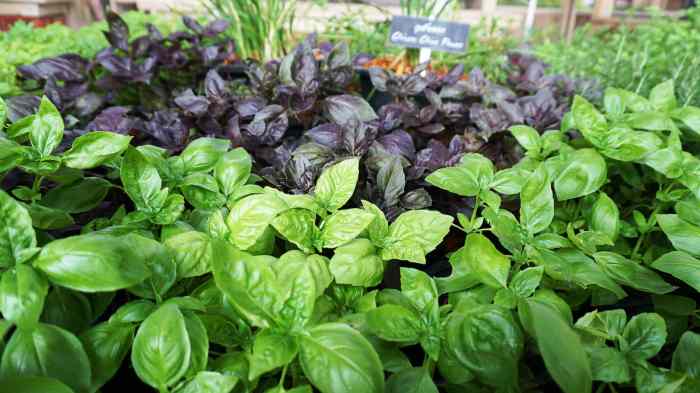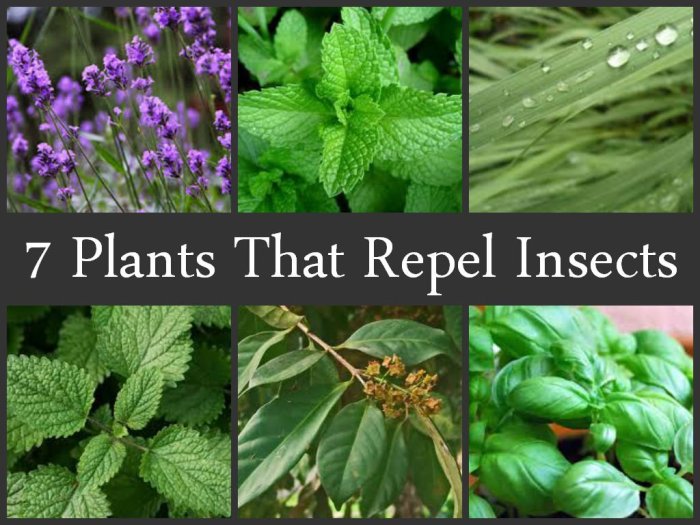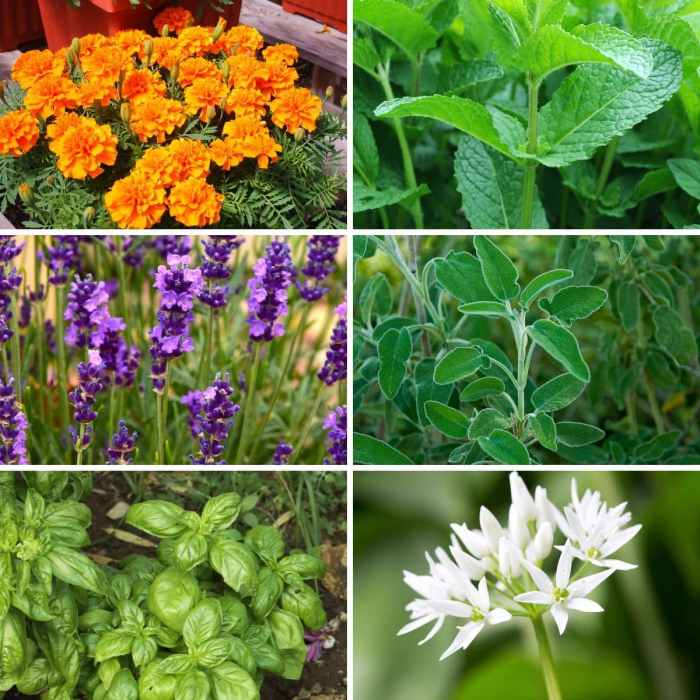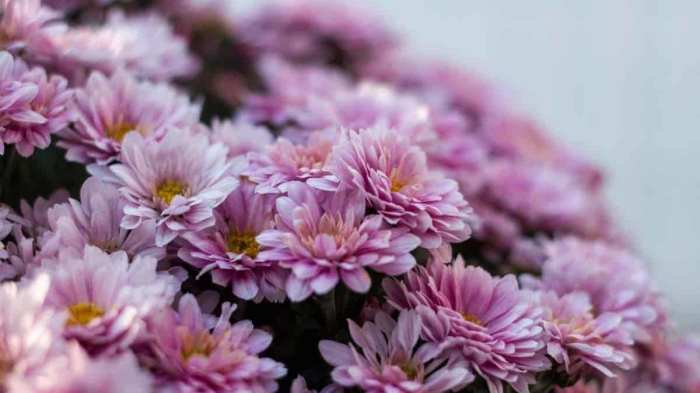Introducing the best plants for keeping bugs away, a comprehensive guide to harnessing nature’s power to repel pesky insects. From mosquitoes to ants, flies, and aphids, discover the most effective plant-based solutions to create a bug-free haven.
This article explores the specific insects repelled by each plant, their mechanisms of action, and strategies for optimal placement around your home and garden. Learn about companion planting techniques, essential care requirements, and how to incorporate these plants into visually appealing landscaping designs.
Popular Plants for Bug Repellency

In the battle against pesky insects, nature offers a potent arsenal: plants that possess natural bug-repelling properties. These botanical guardians emit scents or produce compounds that effectively deter a wide range of insects, providing a natural and eco-friendly way to keep your home and surroundings bug-free.
The efficacy of these plants varies depending on the insect species they target and the mechanisms behind their repellency. Some plants release volatile compounds that mask human scents, making it harder for insects to locate their hosts. Others produce insecticidal or repellent chemicals that directly affect the insect’s nervous system, causing discomfort or even death.
Rosemary
- Repels: Mosquitoes, flies, ticks, and moths
- Mechanism: Emits a strong, pungent aroma that masks human scents and disorients insects.
Lavender, Best plants for keeping bugs away
- Repels: Mosquitoes, fleas, moths, and flies
- Mechanism: Contains linalool and camphor, which have sedative and repellent effects on insects.
Basil
- Repels: Mosquitoes, flies, and ants
- Mechanism: Produces volatile oils that contain eugenol, a compound that disrupts insect communication and feeding.
Mint
- Repels: Ants, aphids, mosquitoes, and flies
- Mechanism: Contains menthol, a strong-smelling compound that repels insects and disrupts their digestive systems.
Marigolds
- Repels: Mosquitoes, aphids, thrips, and whiteflies
- Mechanism: Produces pyrethrum, a natural insecticide that kills or repels insects on contact.
Citronella
- Repels: Mosquitoes, gnats, and flies
- Mechanism: Emits a strong, citrusy scent that repels insects and masks human scents.
Catnip
- Repels: Mosquitoes, flies, and aphids
- Mechanism: Contains nepetalactone, a compound that is 10 times more effective than DEET at repelling mosquitoes.
Plant Placement Strategies

Strategic placement of bug-repellent plants is crucial for maximizing their effectiveness. Planting these plants around the perimeter of your home and garden creates a natural barrier that deters insects from entering.
Keeping bugs away from your plants is crucial for maintaining a healthy and vibrant garden. Some plants, such as lavender, basil, and marigolds, are known for their natural pest-repelling properties. For a comprehensive guide to identifying, preventing, and treating spots on your plants, refer to Spots on Plant: A Comprehensive Guide to Identification Prevention and Treatment . Remember, healthy plants with robust pest-resistant varieties are less susceptible to bug infestations.
Companion planting, the practice of planting compatible species together, can enhance repellency and improve plant health. For instance, planting marigolds alongside tomatoes repels aphids and nematodes that commonly infest tomato plants.
Optimal Plant Placement
- Perimeter Defense:Plant bug-repellent species around the edges of your property, such as rosemary, lavender, and mint, to create a defensive perimeter against insects.
- Entry Points:Place plants near doors, windows, and other entry points to prevent insects from gaining access to your home.
- Vertical Gardening:Utilize trellises or hanging baskets to grow bug-repellent plants vertically, maximizing space and increasing their impact.
Companion Planting Techniques
Companion planting not only enhances repellency but also improves plant growth and health. Here are some effective pairings:
- Marigolds with Tomatoes:Marigolds release a scent that repels aphids and nematodes, common pests of tomato plants.
- Basil with Cabbage:Basil repels cabbage moths, protecting cabbage plants from damage.
- Garlic with Roses:Garlic acts as a natural insecticide, deterring aphids and other pests that infest roses.
Specific Bug Targeting

In the realm of natural pest control, specific plants exhibit remarkable abilities to deter various insect species. From the buzzing nuisance of mosquitoes to the persistent presence of ants, there exists a botanical arsenal that effectively repels these unwanted guests.
If you’re looking for the best plants for keeping bugs away, there are a few options to consider. Some of the most effective include lavender, peppermint, and basil. These plants can be grown indoors or outdoors, and they all have a strong scent that bugs find unpleasant.
For those looking to add a touch of greenery to their home while keeping bugs at bay, hanging plants indoor are a great option. Hanging plants can be placed in any room of the house, and they can help to purify the air while also keeping bugs away.
The effectiveness of these plants lies in their production of active compounds that disrupt the sensory or physiological systems of target insects. Understanding the specific plant-insect interactions allows for strategic placement and utilization of these natural repellents in both indoor and outdoor settings.
Mosquitoes
- Citronella Grass (Cymbopogon nardus): Emits a strong citrusy scent that masks human odors and repels mosquitoes. The active ingredient, citronellal, interferes with the insect’s ability to locate its host.
- Lavender (Lavandula angustifolia): The floral fragrance of lavender contains linalool and camphor, which repel mosquitoes. Studies have shown that lavender oil can reduce mosquito bites by up to 90%.
- Marigolds (Tagetes spp.): Marigolds produce pyrethrum, a natural insecticide that kills mosquitoes on contact. Planting marigolds around patios and entrances can create a protective barrier.
Ants
- Peppermint (Mentha piperita): The pungent scent of peppermint oil repels ants. The active ingredient, menthol, irritates their antennae and respiratory systems.
- Cinnamon (Cinnamomum zeylanicum): Cinnamon bark contains cinnamaldehyde, which acts as a natural ant repellent. Sprinkling cinnamon powder around ant entry points can deter their entry.
- Cloves (Syzygium aromaticum): Cloves emit a strong, spicy aroma that ants find repulsive. Placing whole cloves or clove oil near ant trails can effectively block their access.
Flies
- Basil (Ocimum basilicum): Basil contains eugenol, a compound that repels flies. Growing basil plants near windows and doors can create a natural fly barrier.
- Mint (Mentha spp.): The strong minty scent of mint plants repels flies. Planting mint in pots or along windowsills can keep flies at bay.
- Eucalyptus (Eucalyptus spp.): Eucalyptus oil is a powerful fly repellent due to its high concentration of eucalyptol. Diffusing eucalyptus oil or planting eucalyptus trees can effectively deter flies.
Aphids
- Ladybugs (Coccinellidae spp.): Ladybugs are natural predators of aphids. Attracting ladybugs to your garden by planting aphid-attracting plants like nasturtiums can help control aphid populations.
- Marigolds (Tagetes spp.): Marigolds release a chemical that repels aphids. Interplanting marigolds with aphid-prone plants can provide protection.
- Garlic (Allium sativum): Garlic emits a strong odor that repels aphids. Planting garlic around aphid-infested plants can deter their presence.
Plant Care and Maintenance

Maintaining the health and effectiveness of bug-repellent plants is crucial for optimal pest control. Essential care requirements include:
Watering
Water plants regularly, especially during hot and dry weather. Overwatering can lead to root rot, while underwatering can stress plants and make them more susceptible to pests.
Sunlight
Most bug-repellent plants thrive in full sun to partial shade. Ensure plants receive adequate sunlight for optimal growth and pest repellency.
For those seeking natural pest control, incorporating plants known for repelling insects is an effective solution. From fragrant lavender to pungent rosemary, there’s a wide array of options to choose from. If you’re looking to enhance your indoor space with both greenery and a bug-free environment, Discover the Allure of Indoor Plant Stores: A Guide to Greenery and Decor offers a comprehensive guide to help you find the perfect plants for your needs.
Whether you prefer hanging plants or succulents, you’ll find valuable tips on choosing and caring for plants that not only beautify your home but also keep pesky bugs at bay.
Soil Conditions
Well-drained soil is essential for healthy root development. Avoid planting in heavy clay or waterlogged soil. Amend soil with organic matter to improve drainage and fertility.
Common Pests and Diseases
Bug-repellent plants can be affected by common pests and diseases. Aphids, spider mites, and whiteflies are common pests that can infest plants. Fungal diseases such as powdery mildew and leaf spot can also occur.
Preventive Measures
To prevent pests and diseases, practice good gardening hygiene. Remove fallen leaves and debris, as they can harbor pests. Use organic pest control methods, such as neem oil or insecticidal soap. Encourage beneficial insects, such as ladybugs and lacewings, which feed on pests.
Design and Aesthetic Considerations: Best Plants For Keeping Bugs Away
Incorporating bug-repellent plants into landscaping designs offers a unique opportunity to create visually appealing and functional outdoor spaces. By carefully selecting plants that complement existing flora and architectural elements, homeowners can effectively deter insects while enhancing the overall aesthetic of their gardens and yards.
For those seeking natural pest control, consider the best plants for keeping bugs away. One standout is the Ribbon Fern, an enduring beauty that not only adds visual interest but also repels insects with its delicate fronds. Learn more about this remarkable plant at Ribbon Fern: An Enduring Beauty Unveiled , where you’ll find expert insights on its benefits and care.
Consider the following tips when integrating bug-repellent plants into your landscaping design:
Plant Placement Strategies
- Place plants strategically around seating areas, doorways, and other areas where insects tend to congregate.
- Create a border of bug-repellent plants around the perimeter of your property to deter insects from entering.
- Interplant bug-repellent species with other plants to create a diverse and visually interesting landscape.
Choosing Plants that Complement Existing Flora and Architectural Elements
When selecting bug-repellent plants, consider their size, shape, and color to ensure they complement the existing flora and architectural elements of your landscape. For example, tall, stately plants like rosemary or lavender can be used to create a hedge or screen, while smaller plants like basil or mint can be incorporated into flower beds or containers.
Consider the architectural style of your home when selecting bug-repellent plants. For example, a formal garden with symmetrical lines and geometric shapes would benefit from the use of plants like boxwood or holly, while a more informal garden with a relaxed and natural feel would be better suited for plants like lavender or yarrow.
By following these tips, homeowners can effectively incorporate bug-repellent plants into their landscaping designs, creating visually appealing and functional outdoor spaces that are free from annoying insects.
Final Wrap-Up
By incorporating these natural insect repellents into your surroundings, you can create a welcoming outdoor space free from annoying bugs. Embrace the power of plants and enjoy a peaceful and pest-free environment.
FAQ Compilation
Can these plants completely eliminate all bugs?
While these plants are effective insect repellents, they may not completely eliminate all bugs. However, they can significantly reduce bug populations and create a less inviting environment for pests.
Do these plants require special care?
Most bug-repellent plants have similar care requirements to other plants. They generally prefer well-drained soil, adequate sunlight, and regular watering. Specific care instructions will vary depending on the plant species.
Can I use these plants indoors?
Some bug-repellent plants, such as basil and lavender, can be grown indoors. However, it’s important to choose plants that are suitable for indoor conditions and provide them with appropriate care.